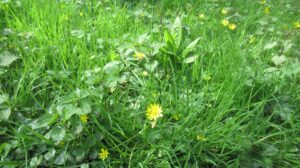As summer fades and temperatures dip in Georgia, many homeowners begin to spot shield-shaped insects gathering on siding, windows, and walls. These are stink bugs. More specifically, they are the invasive Brown Marmorated Stink Bug (BMSB). At Pest Force, we hear from clients every autumn about these pests. Let’s check out why fall is prime time for stink bugs, what risks they bring, and how to deal with them effectively.
Why Stink Bugs Are More Common in Fall
Stink bugs are what entomologists call “overwintering pests.” This simply means they aim to conserve energy to make it through the winter, typically by making their way indoors to protect themselves from the cold. As daytime highs drop and nights become cooler, adult stink bugs look for warm, sheltered spots to spend the colder months.
Some specific reasons Georgia sees more stink bug activity in fall:
- Seeking shelter: Homes and buildings offer cracks, vents, soffits, and gaps in siding where stink bugs can hide as outside temperatures become inhospitable.
- Behavioral aggregation: The BMSB and other species often gather in groups on the sunny side of buildings or near windows.
- Two generations per year: In Georgia, the BMSB typically has one generation in early summer and one that matures in late summer/early fall; the late‐season “overwintering” adults are the ones that seek entry into structures.
What To Do If You See One (Or Many)
Even a single stink bug is an indication that others might be nearby, likely preparing for winter.
Here are steps you should take:
- Don’t squash them! When crushed or disturbed, stink bugs release a strong, unpleasant odor. Instead, capture them gently, like by using a container or paper, and release them outdoors.
- Seal entry points: Check around windows, doors, vents, foundations, and siding. Use caulk, weather‐stripping, mesh, or foam to close small gaps. Screening vents and repairing torn screens also helps.
- Reduce attractants: Stink bugs are drawn to light, warmth, and accessible food. Keeping outdoor lights off or using yellow “bug‐friendly” lights, trimming back plants close to buildings, and keeping interiors tidy can reduce the appeal.
- Contact a professional: If you find many stink bugs or recurring infestations, a pest control company like Pest Force can apply treatments quarterly, both indoors and outdoors, to minimize them. Regular inspections will catch their entry points early and keep them from becoming a major issue.
Problems & Risks Associated with Stink Bugs
While stink bugs are not dangerous in the sense of stinging, biting, or spreading disease, they do bring a set of issues:
- Odor nuisance: Their defensive chemical spray smells foul and can linger — especially if they get crushed or disturbed indoors.
- Allergic reactions: Some people may experience mild irritation or allergic responses from contact with stink bug fluids. Skin, eyes, or respiratory reactions are rare but possible.
- Damage to gardens & crops: Outside, stink bugs feed on many plants — fruit trees, vegetable gardens, and flowers. They pierce plant tissues, which can cause deformities, scarring, or decay, especially when populations are high.
- Indoor infestation issues: Overwintering bugs may cluster in walls, attics, or other small spaces. Even though most species don’t reproduce inside, their presence in large numbers is unpleasant, and dead insects can attract other pests or lead to odor issues.
How Pest Force Can Help
At Pest Force, our quarterly treatment plan is built to manage seasonal pests like stink bugs. By regularly inspecting exterior perimeters, applying barrier treatments, and sealing pest entry points, we help reduce the number of stink bugs getting inside.
Check out more info on our services, and if stink bugs are already making themselves at home, don’t hesitate to contact Pest Force today to schedule an inspection or treatment.



